Connecting research-in-development dots and investing in dynamic scaling pathways – Africa RISING phase2 kicks off with science for impact event
Approximately 80 people from different organizations and partners in agricultural research and development gathered in Dar es Salaam last month to participate in the Africa RISING science for impact event. The meeting also doubled-up as a ‘soft’ launch event for the second 5 year phase of the USAID – funded Africa RISING program. Quite fittingly, the venue was the same as in 2012 when the program was born.
Over the 3-day event, participants, including implementing partners from six Africa RISING countries, representatives from USAID, as well as local and international development organizations reviewed the research achievements of Africa RISING phase 1 while at the same time interrogating and proffering options for the next step – getting technologies (at scale) into the hands smallholder farmers.
The first half of day 1 focused on Africa RISING phase 2 elements, zooming in on what had changed, what was new and what remained as was in phase 1. The second half (of day 1) and the first half of day 2 were anchored on a poster bus stop process that provided a rich 3600-view of the technologies developed, tested and refined by Africa RISING partners working in all the 6 program countries. Day 3 of the event delved into assessing various scaling models and approaches which have been used by Africa RISING (in some cases) and other projects to achieve impact at scale.
Big, achievable vision of success
In his opening remarks, IITA Director for Central Africa and Chair of the Africa RISING Program Coordination Team Bernard VanLauwe explained the targets and ambitions of Africa RISING in its second phase. “We have achieved a lot in terms of identifying best-bet technologies in phase 1 of Africa RISING. In the second phase we need to adopt more dynamic scaling approaches to ensure these technologies get into the hands of millions of farmers who are counting on us. While this is something we (as project implementers) have expressed a lot of appetite for; our donor – USAID have made this an imperative for us as an extra motivation,” he said.
At the program level, Africa RISING has set itself a target to scale sustainable innovation technologies to 1,119,438 households in the six project countries through various development partnerships. The program is working on various arrangements for co-investment with these development partners for wider uptake and adoption of its outputs which will in-turn generate a ‘partnership dividend’ that allows a research project like Africa RISING to actually generate impact at scale.
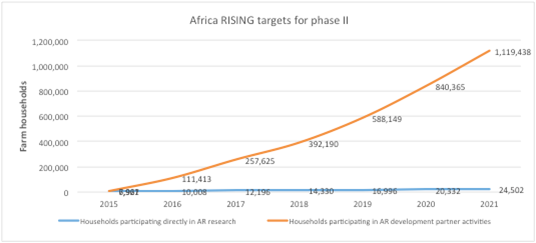
Continuity with evolutionary change
“Africa RISING phase 2 will be a fine blend between continuity from phase 1 and evolutionary change,” explains Peter Thorne, Africa RISING Ethiopia Project Manager. “ITA and ILRI will continue leading the program, which will retain its geographic focus on Mali, Ghana, Ethiopia, Tanzania, Malawi and Zambia. IFPRI will lead on data management, monitoring and impact assessment. And ILRI will continue to lead a communications and knowledge sharing component at program level,” he adds.
The three individual projects that make up the Africa RISING program – West Africa, Ethiopia and East/Southern Africa, will therefore utilize learned lessons, where appropriate, to improve the program’s ways of operating (for example in terms of cross-project harmonization). This will significantly broaden engagement with development partners which, backstopped by target Africa RISING research, will be able to generate impact on Feed the Future target indicators at scale.
A look under the Africa RISING II hood
“To achieve the best results, the Africa RISING program has had to channel the wealth of experiences and lessons learned from phase 1 and make them into successful implementation strategies and plans for the second phase,” notes Irmgard Hoeschle-Zeledon, Manager – Africa RISING West Africa and East/Southern Africa Projects.
Program-wide synergies will be built around shared analyses, common research questions, coordinated communities of practice and learning supported at the program level by investments in M&E, communications and knowledge sharing, and a light coordination structure.
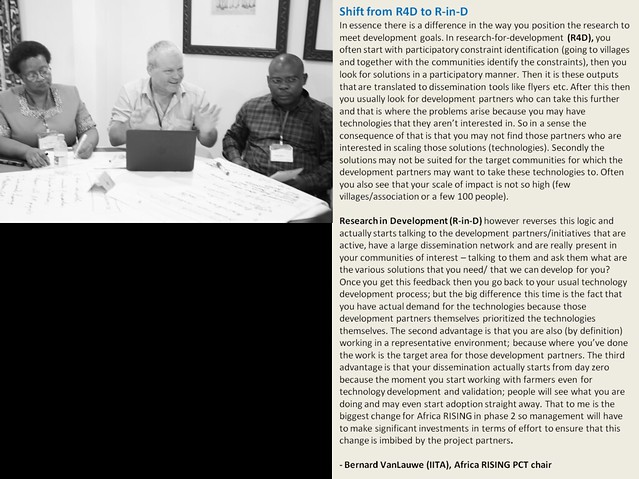
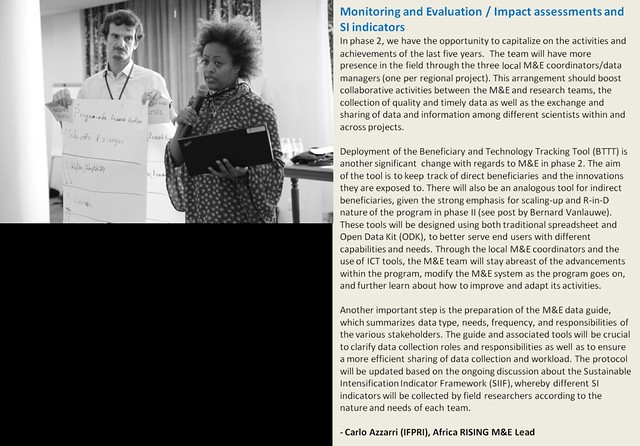
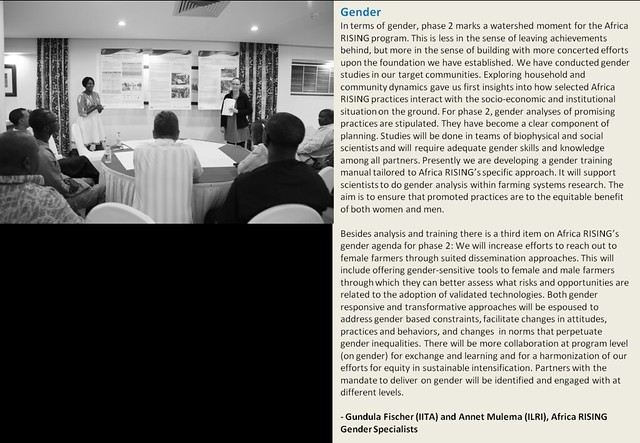

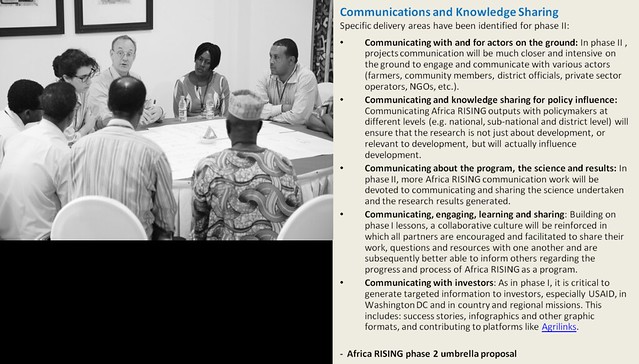
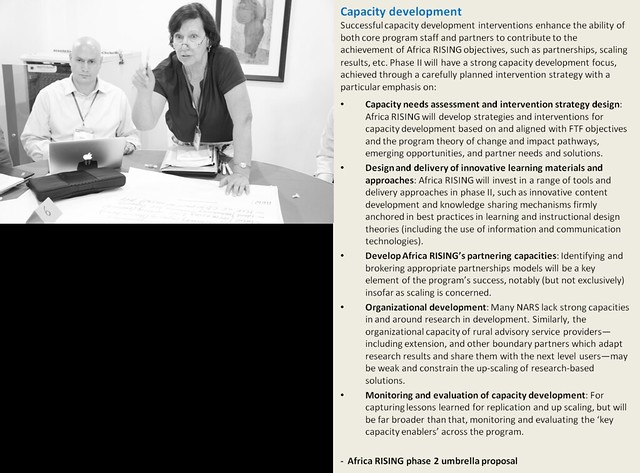
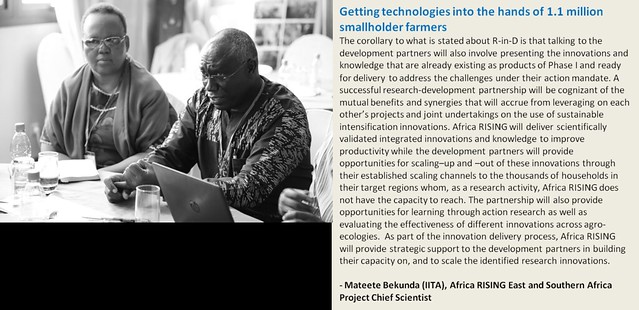
A critical point and good foundations
Will Africa RISING achieve its vision of success by the end of 2021? All remains to be seen, but most partners in the project are optimistic that these targets could even be surpassed. Siboniso Moyo, ILRI program leader and outgoing Africa RISING project coordination team chair noted that the shared vision and the commitment t that vision by project partners are critical elements that currently abound within the program hence the optimism.
“Africa RISING is not the culmination of a journey, but a continuation of one that we all set off on 5 years ago. We had extensive synthesis in the first phase. I am certain you all appreciate that there were great achievements in the first phase, but we also have to learn from some challenges. We are at a critical point, transitioning from one phase to another. And we are confident that we have good foundations to build on. We can visualize together and commit to delivering on set objectives of the program which we will all come back to in 5 years’ time and check that we have delivered,” she said at the close of the event.




